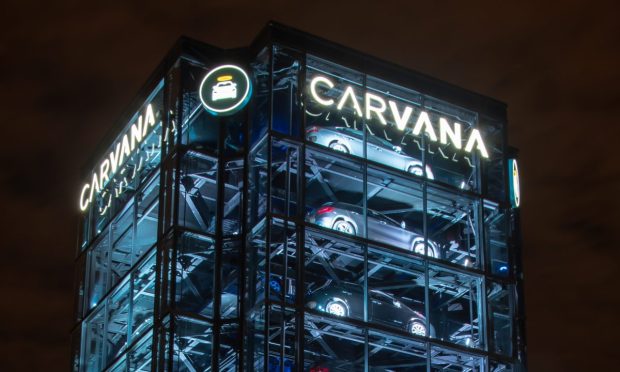Carvana Expects Return to Profitability in Q2 After Cutting Costs

Carvana expects to return to profitability in this quarter after cutting costs.
The used car retailer expects to achieve positive adjusted earnings before interest, taxes, depreciation and amortization (EBITDA) in the current quarter, Carvana said in a Thursday (May 4) letter to shareholders.
This forecast comes after Carvana improved its adjusted EBITDA from negative $291 million in the quarter ended Dec. 31, 2022, to negative $24 million in the quarter ended March 31, according to the letter.
The company attributed the improvement to progress on its previously announced three-step plan of achieving positive adjusted EBITDA, gaining significant positive unit economics, and then returning to growth.
“The first quarter was a big step in the right direction and there are more steps to come,” Carvana CEO Ernie Garcia said in a Thursday press release. “Given our strong start to the year, we expect to achieve positive adjusted EBITDA in Q2 2023.”
As PYMNTS reported in February, Carvana, like many consumer-facing businesses, was severely tested in 2022.
In the case of the used car retailer, it faced snarled automotive supply chains, rapidly rising interest rates and a dramatic increase in the price of used cars.
Higher borrowing costs have impacted sellers of new cars as well, placing them under increased pressure to discount their cars to appeal to nervous consumers.
The high costs have also forced some riskier subprime borrowers out of the market.
Carvana said in its shareholder letter released Thursday that it improved its adjusted EBITDA during the quarter by reducing its inventory, continuing to lower its advertising expenses, and achieving more than $100 million of savings in quarterly selling, general and administrative expenses (SG&A).
The savings were achieved by cutting advertising, the number of miles traveled to deliver vehicles, and corporate headcount, the letter said.
During the current quarter Carvana expects to continue to normalize the size of its inventory and further reduce SG&A expenses, per the letter.
“The last 12 months have made it harder to see, but we remain firmly on the path to changing the way people buy and sell cars and to becoming the largest and most profitable automotive retailer,” Carvana said in the letter.

